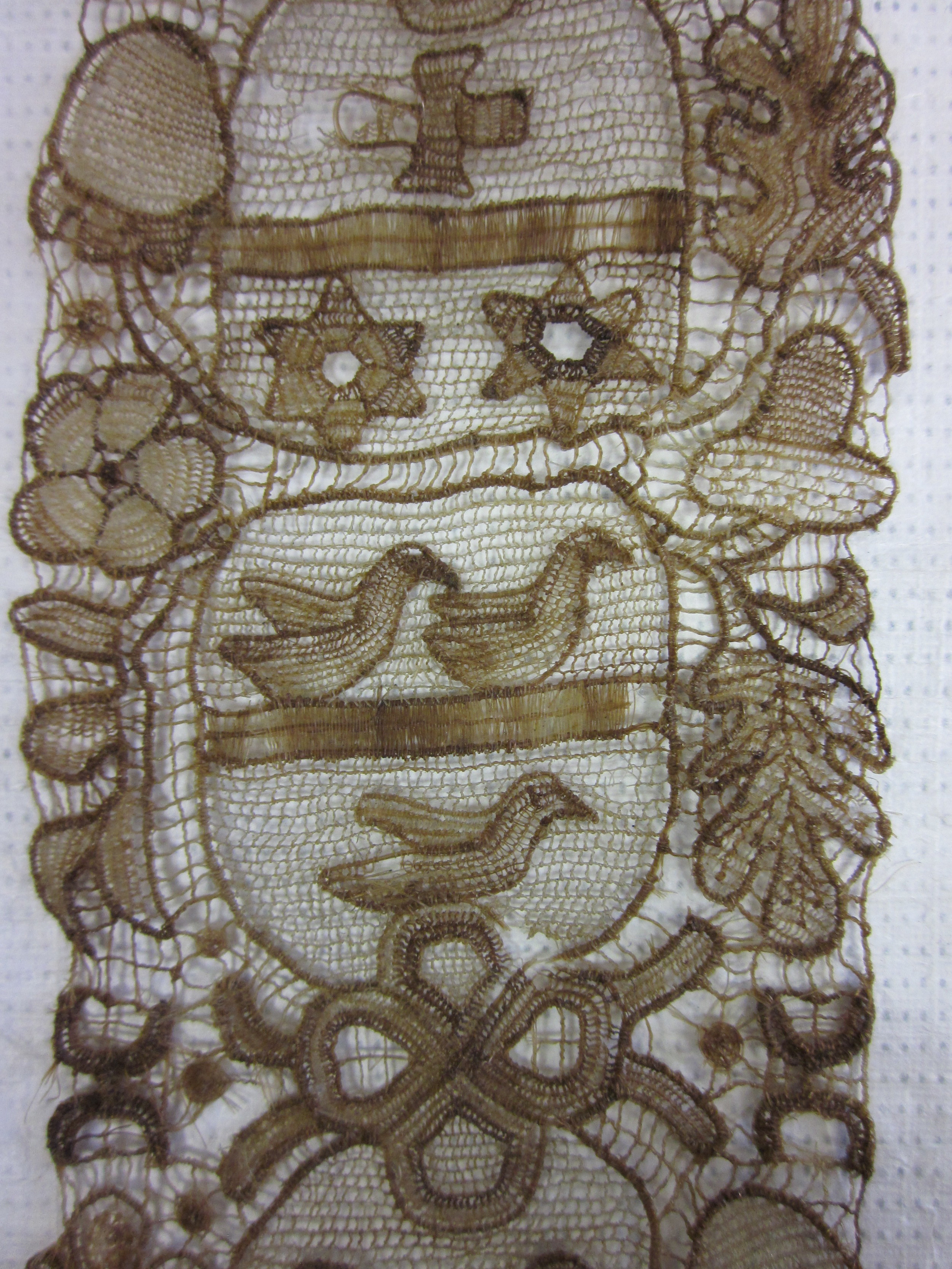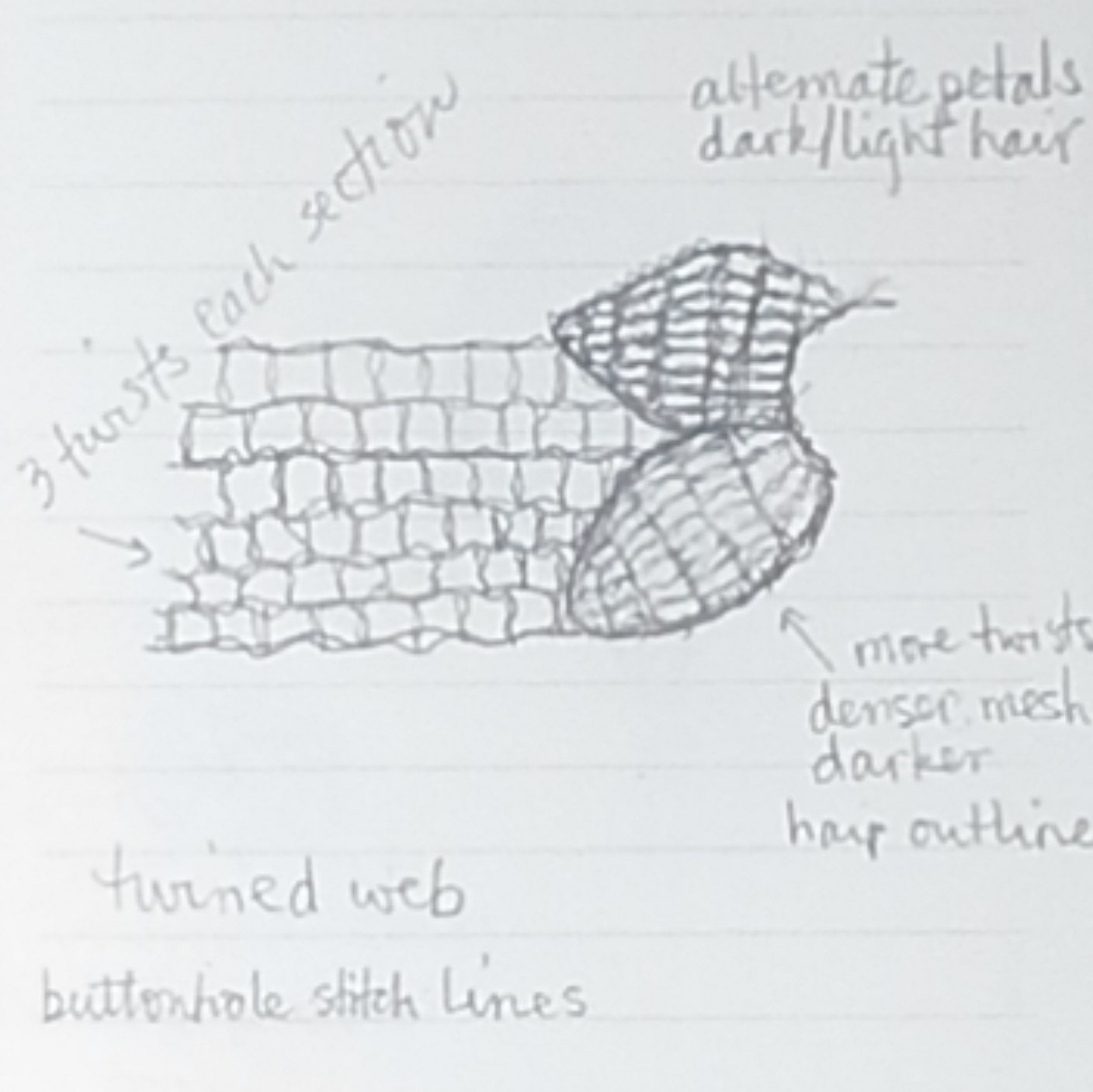Hair Needlelace
London, UK
Funded by an Oregon Arts Commission Career Opportunity Grant, I researched 17thC human hair lace in Victoria & Albert Museum’s textile collection at the Clothmakers' Centre for the Study and Conservation of Textiles and Fashion. Guided by British lace expert Gail Baxter of Ghost Tree Studio, I learned how these pieces are made by stitching and twisting single strands of hair into tiny loops.
Long associated with grieving and death, cut locks of hair and hair jewelry became an accepted practice of mourning during the 17th-19th centuries in England as a way of preserving and commemorating the deceased. Intricate workings of hair threads represent an homage to a lifespan, and a way to literally carry the memory of a loved one in tangible form.








